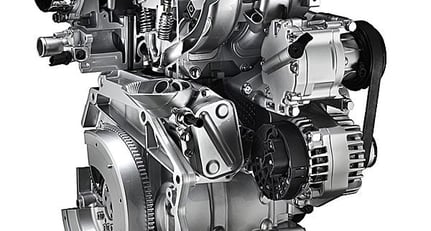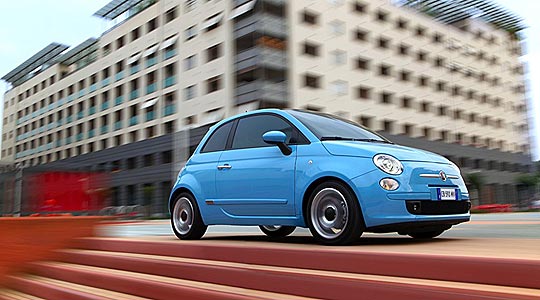
Forget all those preconceived ideas about two-cylinder engines. Fiat’s intriguing 500 TwinAir really is something new, something excitingly different to drive. The ‘green’ credentials of this technology are impeccable, apparently opening up an unexpectedly promising future for the petrol-powered piston engine. As Fiat says, ‘TwinAir: the revolution starts here’.
It seems unlikely that any motoring enthusiast worth his salt doesn’t know by now that the 500 TwinAir is the world’s cleanest mass-produced petrol engine. Rated at just 95g/km in CO2 emissions, this turbocharged 875cc twin offers a 15% improvement over the 1.2-litre petrol engine that has been the most popular power unit fitted to new 500s to date.
There is a similar improvement in fuel consumption, the official combined cycle figure for the five-speed manual being 68.9mpg. The semi-automatic five-speed ‘Dualogic’ transmission, which will arrive in the UK soon, is rated at a combined 70.6mpg. At some point in the not-too-distant future, a double-clutch version is expected and that might produce even better fuel consumption. Start&Stop is standard on all 500 TwinAir models.

Thanks to such dramatic increases in efficiency, the 500 TwinAir is also, at a maximum 85HP (or 83.8bhp), 23% more powerful than the 1.2 four-cylinder petrol engine. That’s impressive, but the improvement in torque is even more remarkable. Fiat’s 1.2 four-cylinder gives a respectable 75lb ft at 3000rpm but the new 500 TwinAir delivers 107lb ft at a mere 1900rpm. Even when you press the ECO button on the dash, which is recommended in city driving to maximise fuel economy, the maximum torque drops only to 74lb ft at 2000rpm.
The new 500, introduced three years ago, is now securely established as one of the most successful exercises in retro styling and, for that reason, it’s tempting to suspect that the introduction of a twin-cylinder engine version was inspired by nostalgia, recalling the 500 of 1957, which also had a twin-cylinder engine. The new TwinAir is nothing of the sort: what we have here is nothing less than a clear pointer to the future of the petrol engine. It has two cylinders because Fiat has found that to be the best way to go for engines in small cars; and it has nothing whatsoever to do with sentimental thoughts of a distant past.
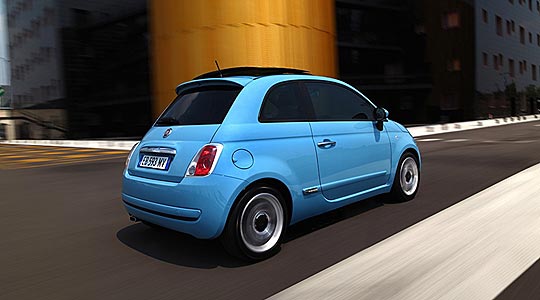
Further 500 Twinair engine options are promised “in the near future”, including a normally aspirated 65HP model and an even more sporting 105HP turbo. For the moment, the 85HP is the latest thing and it should appeal to a wide range of customers, not just the mean or green-minded. The 500 TwinAir will surely be a magnet to all those interested in exciting new technology.
Equally, anybody who enjoys high-performance driving will appreciate being behind the wheel, and here I come back to what was said right at the start: forget all your preconceived ideas about two-cylinder engines. First, this TwinAir is nothing like a motorcycle engine. The construction bears no relation to bike technology and this engine neither behaves nor sounds like that of a motorcycle. When you start it up, what you hear is a deep, distant rumble. It’s no noisier than any four-cylinder or three-cylinder engine but the quality of the sound is entirely different, best described as a pleasing growl. As for vibration, there is an acceptable trace up to 2500rpm but above that speed it’s virtually eliminated by a counterbalancing shaft, which adds only about 1kg to the engine’s total weight. At 85kg, this compact, robust little unit is around 10 per cent lighter than an equivalent four-cylinder car engine.
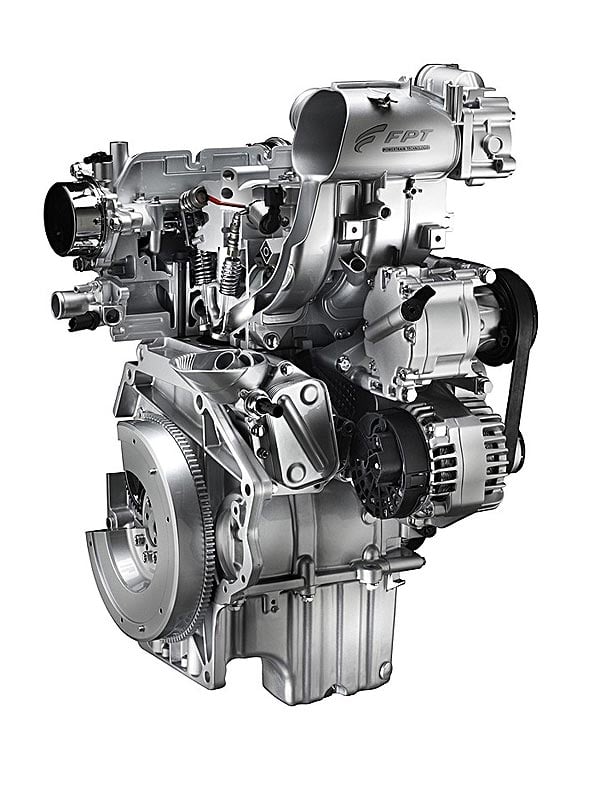
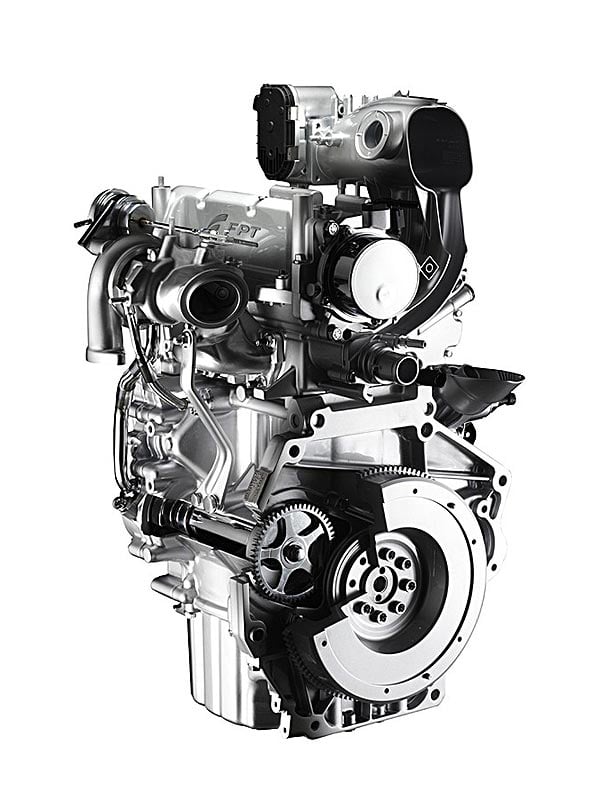
Once you get out on the open road, the engine feels very lively but sounds surprisingly relaxed at all speeds. So much so, in fact, that it takes a bit of time to learn how to get the best from it. The temptation at first, because it never sounds as if it’s revving hard, is to spend far too much time in too low a gear. The torque from low revs is quite astonishing, however, and after a few miles you get the hang of changing up at the right time and using that prodigious torque to get the best out of the impressive performance available.
This is a quick little car anyway but, driven correctly, it is remarkably fast for this size of engine. Although the high-performance model has yet to arrive, this 85HP version already offers a top speed of 108mph, with 0-62mph on in 11 seconds. The recommended route for our test drive followed attractive rural roads, with no motorway driving. This seemed suspicious, making me wonder whether it would seem like a little buzz-box when cruising at speed, so I diverted to take in an extra bit of driving on the M40. Far from being uncomfortable in any way, at 70mph on a level road in top, the engine was almost inaudible.
With such strong torque available, keeping up with the normal flow of motorway traffic was a very relaxed business. Even when climbing hills, there was never any need to change down to fourth. Just opening the throttle a little was enough to produce an impressive response from the engine.
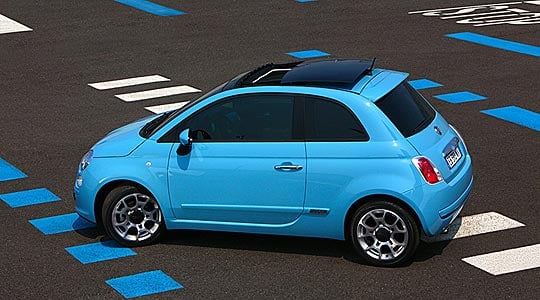
Fiat’s MultiAir technology, in which the behaviour of the inlet valves is hydraulically activated under electronic management, dispenses with the traditional throttle control. As a driver, you’d never know that: all you notice when opening the throttle is the excellent response, with only the very briefest split second of turbo-lag. This brilliant new system, which seems to be the key to an exciting new future for petrol engines in general, has made the 500 TwinAir possible.
Downsizing is the catchword of our time, perhaps, and in the case of this remarkable new little Fiat, small certainly is beautiful. Prices (OTR) range from £10,665 for the 500 TwinAir Pop to £16,065 for the luxurious 500C TwinAir byDIESEL. If you do go for the ultimate, it is still petrol-powered – the conspicuous DIESEL badging refers to the design company better know for its fashionable clothes – and you might have to spend some time explaining that to your friends, over and over again.
Text: Tony Dron
Photos: Fiat
ClassicInside - The Classic Driver Newsletter
Free Subscription!
